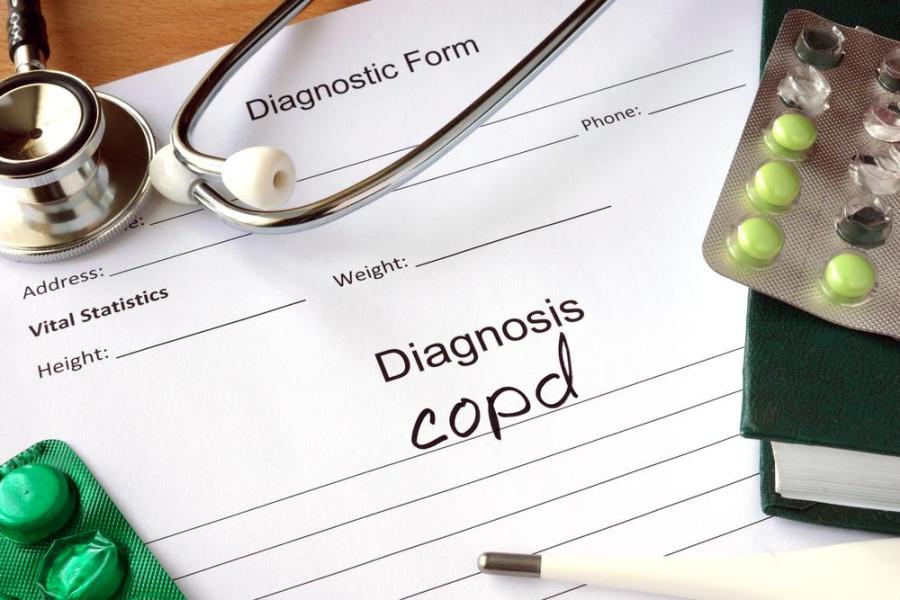
Diagnosis of Chronic Obstructive Pulmonary Disease (COPD)
The diagnosis of COPD is most often based off of symptoms, spirometry, lab work and imaging. Spirometry is a measurement of how deeply you breathe and the amount of air you can force out of your lungs after one second.
Spirometry
A spirometer reading is most often used to identify COPD. It involves breathing into a tube attached to a device that measures the amount of air expired on forced expiration in 1 second (FEV1), the total amount of air expired (FEV), and the total lung capacity (FVC). This may be abnormal even when there are few symptoms of the disease.
In COPD you will see
- FEV 1:FVC ratio of less than <0.7
- FEV1 less than <80%
Chest X-ray
Sometimes a chest x-ray can be used to make the diagnosis of COPD. This will show hyperinflated lungs and an increase in the darkness of the lungs due to the increase in the size of the alveoli.
Lab work
- In many cases there will be an increase of red blood cells
- Decreased oxygen entering the blood stream means more red blood cells are produced to carry the oxygen that is entering.
- Sputum culture
- to detect inflammation and/or infection
- ABG (arterial blood gas)
- To detect the ratio of oxygen versus carbon dioxide in the blood
Stages of COPD according to American Thoracic Society
Stage 1: Mild
- FEV1 less than 80
- With or without symptoms
Stage 2: Moderate
- FEV1 less than 80%, but greater than 50%
- Chronic cough, sputum, shortness of breath with activity
Stage 3: Moderate severe
- FEV1 less than 50%, but greater than 30%
- Chronic cough, sputum, increased shortness of breath, fatigue
Stage 4: Severe
- FEV1 less than less than 30% or more greater than 50% with signs of respiratory failure




